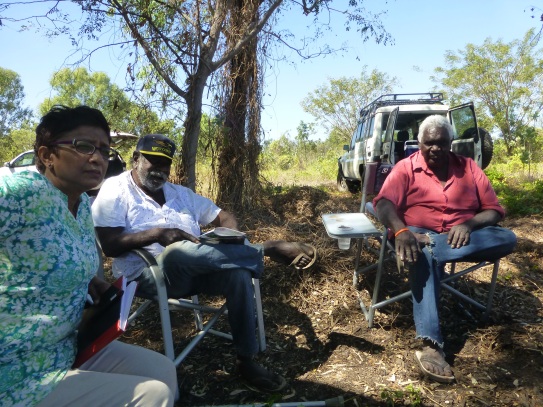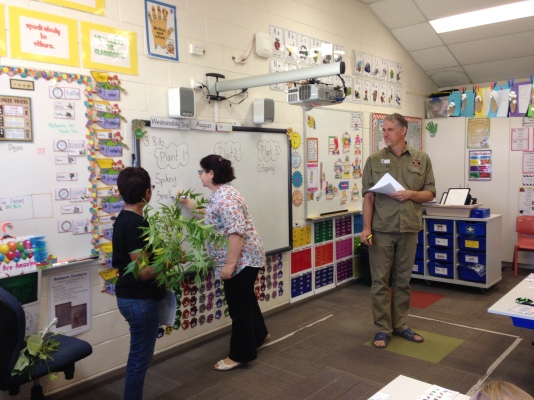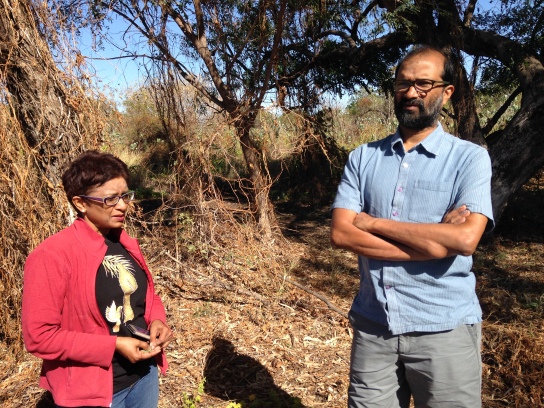During the first two weeks of August, ‘The Kimberley Project’ (this time consisting of Priya Rangan, Pat Lowe and myself) reconvened in Kununurra for our fourth round of fieldwork with elders and staff from the Mirrima Dawang Woorlab-gerring Language and Culture Centre.
We encountered almost immediate misfortune as Pat became ill during the first night and had to head to hospital. Unfortunately, Pat remained in hospital for the duration of the trip with what ended up being pneumonia, only to be let out hours before her flight back to Broome – happy to report she made a terrific recovery. In the absence of our cultural attache and friend, Priya and I solemnly battled on.
Seeking to further explore Miriwoong elders’ memories and perspectives about introduced plants, this trip aimed to develop language names for locally prominent weeds. To ensure that we could find the required weeds, we visited the weediest site we have ever encountered, which ironically happens to be designated as a ‘conservation estate’ by Western Australia Parks and Wildlife. Sitting amid a veritable who’s who of Kimberley weeds, Miriwoong elders suggested and discussed possible names for some plants that have been designated as environmental weeds. The names were generally descriptive, but almost always had a historical significance that demonstrated a cultural and personal connection to each plant.

Mainly for fun, we conducted a similar exercise with a group of grade 1 students at the local primary school. Their imagination ran wild, and although the names ‘Poison Girl’ (Calotropis), ‘Spiky Feather’ (Neem) and ‘Swordfight Bendy-bean’ (Leucaena) might not be taken up officially, our team seems unable (and unwilling) to go back to their original, comparatively boring titles.

During our time in Kununurra we were joined by our team member Nitin Rai, who had the unique experience of spending his first week in Australia in the Kimberley. Nitin was intrigued by the biogeographic similarities between the landscape of the east Kimberley near Kununurra and the other sites in which he has worked in Kutch in northwestern India, but seemed somewhat baffled by the conspicuous lack of people.

This trip leads into a final workshop for our ARC project that will take place at ATREE in Bangalore in November-December, where, along with our research partners from India, Madagascar and South Africa, we will share findings and begin the exciting task of compiling some comparative publications!


[…] landscape than the Darram Conservation Estate on the outskirts of Kununurra. As I mentioned in my previous blog, one could mistake the ‘Weed Park’ as a site for Kimberley Weed Bingo instead of a […]
LikeLike